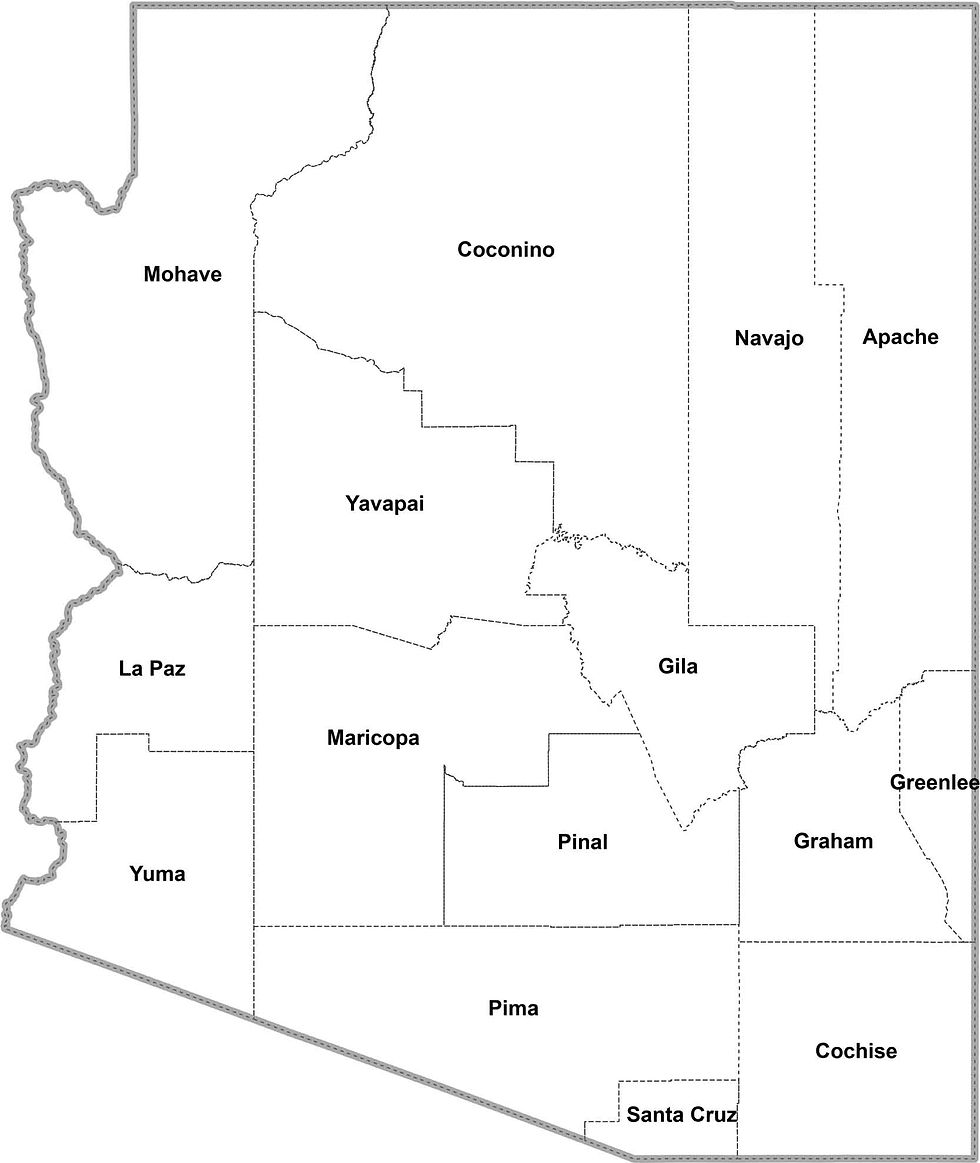Arizona's History of Apportionment Law
- azpoliguy

- Jun 22
- 2 min read
Updated: Jun 26
Apportionment laws are a vital component of our political system, ensuring equitable representation for all citizens. The principle of "one person, one vote" was established by the Supreme Court in Baker v. Carr (1963). The principle provides that each legislative district has roughly the same number of people to prevent one district from having significantly more or fewer than another. Thereby, equal representation occurs when the districts have reasonably the same number of people. But what are 'legislative districts'? A legislative district is a geographical area designated for a member of the House to represent.
Arizona's Constitution initially did not provide for legislative districts. "Instead, the most logical political subdivisions for representation were used: the counties." The State Library of Arizona, Choosing our elected representatives: a look through time – The Shining S.T.A.R.L. (January 2006). The Constitution set the number of representatives based on the population of each county. A voter's referendum introduced legislative districts to Arizona in 1918, which required counties with over 1,500 votes in the latest Gubernatorial election to have legislative districts. "Creating districts was meant to ensure that elected representatives would be known to everyone in their districts." The State Library of Arizona, supra. That intention aligns with the philosophy of James Madison, who wrote that "it is a sound and important principle that a representative ought to be acquainted with the interests and circumstances of his constituents." James Madison, Federalist Paper 56 (1788). In Arizona, legislative districts were within the counties until 1967.
In 1967, the Federal District Court called for a special session to establish a new apportionment system for Arizona based on the principle established in 1963. The result was that the number of legislative districts decides the number of representatives. How many districts? Thirty-two districts initiated the new system in 1968, but that number quickly decreased to thirty by 1972. That is why, today, Arizona has only 60 members in the House representing over 7.5 million people. One of the most troubling issues involving legislative districts is the substantial influence both major parties have on the formation of the districts. "We considered their redistricting program partisan in nature, gerrymandering and the most brazen grab for political power I have ever seen." said Bob Stump, an AZ Congressional Senator, in opposition of the new system—the State Library of Arizona, supra.
Today, Arizona's Constitution sets the number of representatives based on the number of legislative districts. There is a lot more to review, such as the invalidity of the Supreme Court's principle of "one person, one vote" and the highly esteemed redistricting committee that creates the legislative districts. However, I conclude this post by suggesting to you, the reader - the voter, that it is time to reconsider apportioning representatives based on a county's population.





Comments